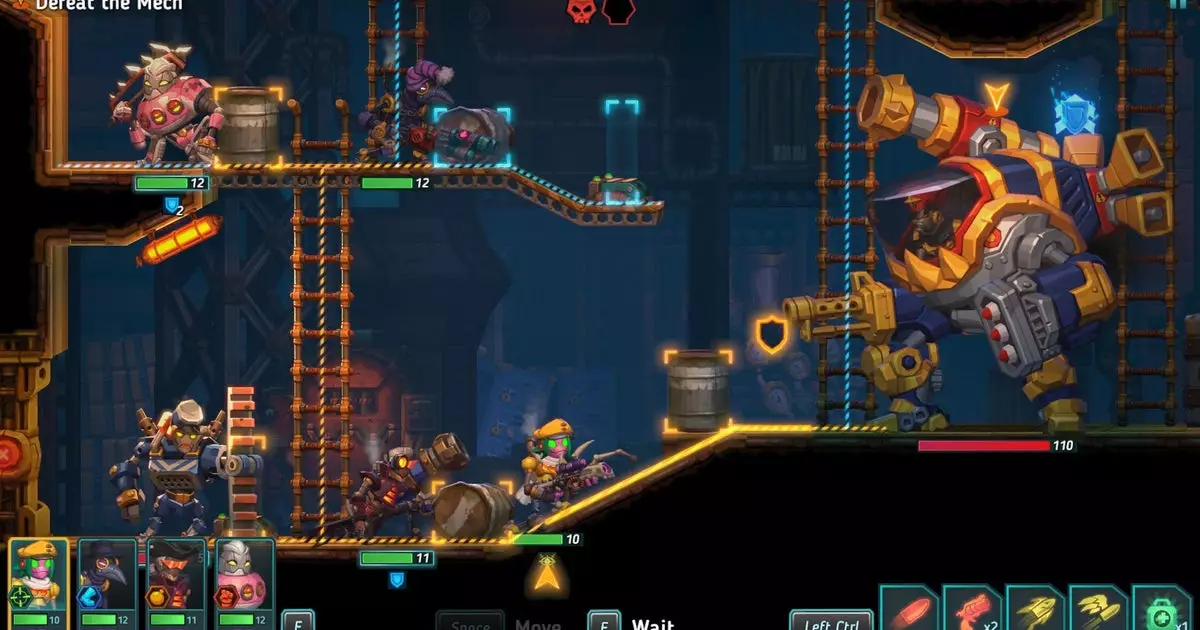In the ever-evolving landscape of video game development, companies often face daunting challenges that can lead to significant organizational changes. Recently, Thunderful Games, known for its vibrant SteamWorld series, has announced layoffs affecting around 80 to 100 employees. This decision comes as part of a broader “restructuring,” which is poised to alter the company’s developmental trajectory and could signal shifting trends in the gaming industry as a whole.
The layoffs, described as necessary by CEO Martin Walfisz, have caused an outcry among fans and industry analysts alike. The move has been framed as a strategic pivot towards a model that emphasizes publishing rather than direct development—an approach that raises questions about the future of internal projects. This decision indicates Thunderful’s operational shift to reduce fixed costs and leverage external talent, aiming to create a more flexible and diversified portfolio. The change highlights a significant trend within the gaming industry: the increasing reliance on partnerships with independent studios for content creation.
Additionally, the timing of these layoffs is critical. In January, Thunderful had already reduced its workforce by 20 percent, suggesting deeper financial woes beyond the mere reallocation of resources. They acknowledged struggling with negative cash flow, a situation exacerbated by what they termed over-investment in various projects. This indicates that Thunderful’s transformations are not whimsical; rather, they are survival tactics in a highly competitive market.
The immediate consequences of these layoffs extend far beyond the loss of jobs. With a stronger emphasis now on external partnerships, Thunderful’s commitment to developing unique titles, particularly those under the SteamWorld umbrella, seems to be wavering. While the company assures stakeholders that it will maintain “some internal development capacity,” the ambiguity surrounding which projects will proceed is concerning.
Historically, Thunderful’s internal teams were responsible for successful games like *SteamWorld Heist* and others from their earlier catalog. The recent restructuring raises questions: Will future iterations of the SteamWorld series continue to bear the distinctive charm that fans have come to love? Or will the focus gradually shift towards more commercially viable, possibly homogenized offerings designed to attract a broader audience?
Though Thunderful has not explicitly detailed which game projects are being canceled, speculation within the community leans towards the idea that non-SteamWorld projects will be the first to go. The studio’s ancillary developments—titles that originally showcased the diverse creative potential of its divisions—could be sacrificed on the altar of fiscal prudence.
Thunderful’s restructuring is not an isolated event; it mirrors a larger pattern seen across the gaming industry. As companies grapple with rising production costs, fluctuating consumer interest, and increased competition, there is a growing trend to streamline operations. These changes often involve a diminished appetite for risk—a reality reflected in the increasing tendency for firms to consolidate development efforts into a fewer number of franchise opportunities.
The decision to prioritize external publishing can be seen as a double-edged sword. On one hand, it can lead to diverse game offerings while distributing risk among multiple developers. Conversely, this approach also inhibits creative freedom and can dilute the unique identities that have become hallmarks of successful studios. For fans, this shift poses a potential loss of the innovative spirit that smaller or independent titles traditionally offer.
As Thunderful Games navigates these turbulent waters, the gaming community is left to ponder its next move. The impact of the layoffs and the strategic pivot towards external partnerships will likely resonate for years to come. As the gaming industry continues to evolve, it raises a poignant question: in the race for profitability, what will become of creativity and innovation in game design?
The future remains uncertain. While the core of Thunderful may still hold onto its identity through the beloved SteamWorld series, the ever-increasing focus on external partnerships raises concerns about the depth and diversity of future content. The hope is that, in restructuring, Thunderful doesn’t just survive but thrives, preserving the essence of what made their games captivating to players around the world.


Leave a Reply